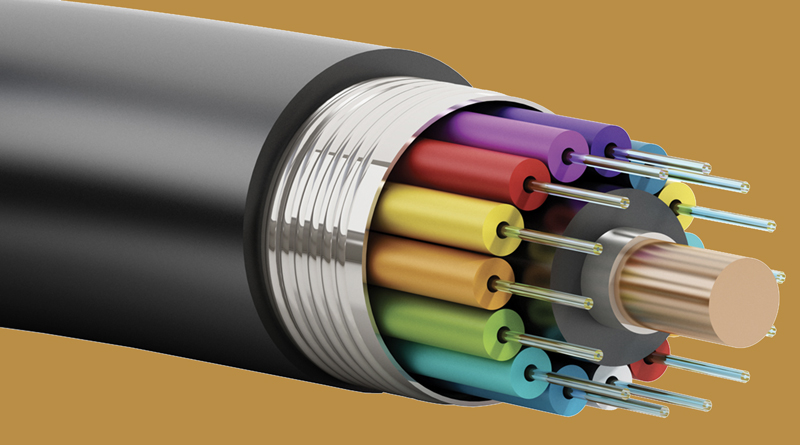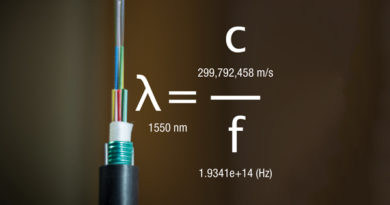Fiber to the X (FTTx) — NextGen Services at the Speed of Light
By Steven Harris
Optical communication and signaling principles are well over 200 years old. The first optical telegraph, or semaphore, was used to perform visual signaling across France by inventor Claude Chappe. The essential requirement to communicate by individuals has not diminished since these early years in France, and today ultra-high speed communications are critical. To improve on the asymmetrical copper infrastructure delivery of services, there is a worldwide sensation of deploying the latest optical fiber technology, supporting symmetrical gigabit connectivity beyond copper. Our cable customers are part of this sensation, requesting gigabit connectivity, best in class reliability, 24×7 mobility access, networked Internet of things (IoT) and consumption of the highest resolutions of video.
Cable operators are responding to this thirst for gigabit, designing and deploying various flavors of fiber optic architectures. These architectures consist of back office networks, transport networks, wireless infrastructures and most important, the access portion for improving our customer satisfaction. These architectures are providing the pipeline for the next generation of cable services, while at the same time laying the ground work for new business models at gigabit speeds and beyond. Operators realize these architectures offer long term capital expenditure (CapEx) and operational expenditure (OpEx) savings that are important to scaling our networks for the next generation. Fiber passive optical networks (PONs) offer significant energy cost savings, 99.999% availability and almost endless signal bandwidth.
Fiber to the “x” is an optical broadband architecture that will be the future delivery mechanism for our cable services. Services that will offer high dynamic range (HDR) 4k video, ultra-high speed data (HSD), high definition (HD) video telephony, and countless IP devices interconnected over optical networks. The hybrid fiber coax (HFC) access network from the cable headend will transform into an optical distribution network, or ODN to carry these services. While the “x” in the term FTTx refers to the endpoint of the optical fiber network, for example the “n” in the popular fiber to the node or FTTn architecture. Operators are pushing optics deeper than FTTn with fiber to the curb (FTTc), fiber to the home (FTTh) and fiber to the business (FTTb). These FTTx network architectures use optical cabling in place of the traditional coaxial cabling found in our HFC networks.
There are three main ODNs used by operators to deliver FTTx: centralized split, distributed split and distributed tap split. The centralized split is the most popular for its simplicity, as it takes a single fiber and splits the signal to multiple customers (e.g., 32). The distributed split is required in special situations where additional cascaded splitters are needed deeper in the ODN. The final architecture is the distributed tap split which is another form of a distributed split, used to resemble the HFC tapped architecture, however, light is not tapped off like traditional coaxial RF. While each of the ODNs has its pros and cons, they all support the latest FTTx technologies.
While we have three architectures, there are also three popular FTTx technologies used to create FTTx networks: SCTE/ISBE 174 radio frequency over glass (RFoG), IEEE Ethernet passive optical network (EPON) and ITU-T gigabit passive optical network (GPON). Operators that are beginning deployments of FTTx have chosen RFoG, as it should only require an erbium doped fiber amplifier (EDFA) at the headend. RFoG allows operators to utilize customer premises equipment (CPE) and wiring, along with supporting new technologies like DOCSIS® 3.1. EPON and GPON are a more intelligence FTTx networks, requiring an additional piece of equipment at the headend called an optical line terminal (OLT), similar to a DOCSIS CMTS. These PONs require different CPE as well, known as an optical network unit (ONU) and optical network terminal (ONT). All three of these technologies are supported by a DOCSIS back office.
Our industry has always leveraged the latest technologies, continuing the evolution of our networks. Fiber is another vital step to scaling our networks to support the services of the future. SCTE/ISBE has remained lockstep with our industry partners, bringing our members the latest resources and training. Learn more at http://www.scte.org/fttx.
Steven Harris
Senior Director, Advanced Network Technology and Instruction, Learning and Development, SCTE/ISBE
Steve Harris is the senior director of advanced network technology and instruction at SCTE/ISBE. He is a respected international telecommunications subject matter expert, sought-after presenter and principle instructor. He is responsible for the tremendous growth of SCTE/ISBE training programs and certifications for over a 100,000 telecommunication professionals. He also has responsibility for the client partnership in the SCTE/ISBE Corporate Alliance Program for MSOs and vendors.


